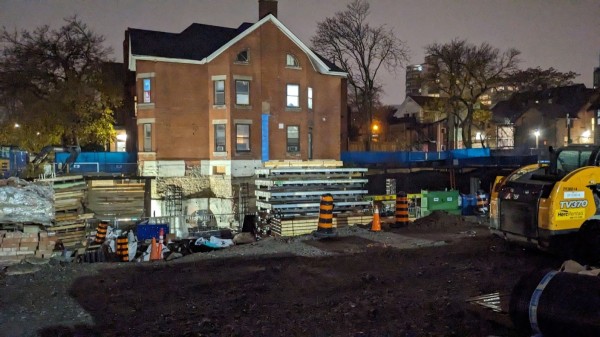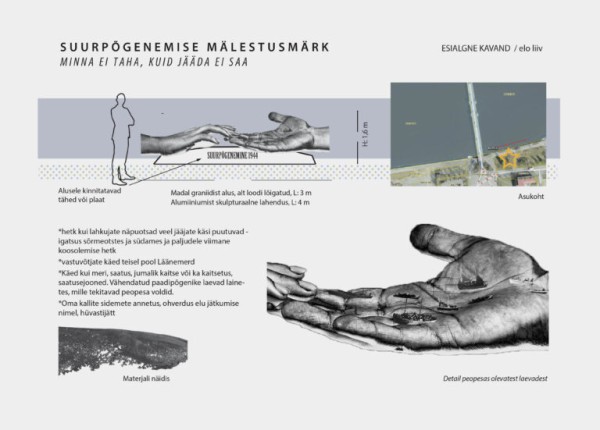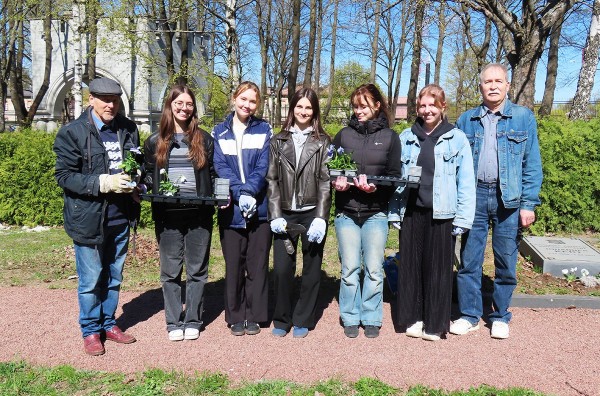A reflection on a journey through the time warp
World War II saw a cohort of Estonian born children fractured into three significant parts. As passengers in their parents’ journeys in a flight from despair we were to walk three very different roads: Some of our parents were forcibly removed to Siberia, others fled from Estonia to escape this hellish fate and most were to remain in an Estonia which remained only the same in name.
Over the last decade, as my life has crossed the paths of all three groups of people it has been fascinating to observe the differing journeys being compared and contrasted.
This year’s ESTO was my first contact with such an event. It was an awesome experience. Sixty years post flight we had become all but the elders of this event which decades ago had been generated to keep the expatriate Estonians in touch with each other. Yet we had done something differently: We had taken a leap into the largely untouched and unobtrusively rejoined our cohort.
Those of us who were involved in the organization of the scientific morning had not planned it that way: the thoughts just blended to create a collage that left the canvas perfectly covered.
The diorama of the day was in a setting of posttraumatic stress. Astrid Tuisk, Anu Kasmel and I vignetted the phenomenon through the eyes of those exiled to Siberia, those who remained in Estonia and those who fled. Jaak Rakfeldt shared a study on how the second generation of expats, i.e. our children, ascribed their identities and Victoria Scotti demonstrated how the imprints of identity were laid no matter where we had trod: That our children too carried those imprints in some way. It was a complex event where an accurate transcript would not been feasible to take away with me. I took away instead an enormous tapestry of quandaries to reflect on.
In some way we have all shared a common thread: All our beginnings were linked by that same feared knock on the door in the dark of the night. Some have visual memories of the event, others only have emotional ones and many of the very young at the time know it only by the mythology of their elders: with perhaps a tinge of the terror personally engrained.
For those who broached the wilderness of exit from Estonia for some the road led to Siberia, for others across the war hardware laden Baltic Sea.
Those of us who have read accounts of the Estonians’ journeys through Siberia all flinch at what those children must have chronically endured and frequently succumbed to. As I flew over Northern Siberia last year from Tokyo to Helsinki, and gazed through the airplane window at the barren wastes that lay below, I felt an enormous sense of pride in the courage of my brethren and their parents.
Those of us who fled with our parents met different challenges. The land routes to Germany were certainly more climate and terrain friendly but our parents’ fear of capture and that of the threat of a trip to Siberia were indelibly felt by children too. Those emotions very commonly were to be primitively imprinted into our rapidly evolving minds. I still remember verbal silence as the language of war. I still wonder how deeply it is engrained: there are place names that still send a chill through me, and I well remember my teenage years when my conscience insisted that I make no attempt to trace my father for fear of the wrath that might be imposed on him for our defecting Estonia. Somehow I remember laying that fear to rest twenty years ago when I learnt that father and his family were safe in West Germany.
The boat trips across the Baltic, be they to Sweden or Germany, while short time wise, could in retrospect be only be described as Russian roulette: travel among the sea mines, torpedoes and the fireworks generated by swooping war planes were dramatic stuff for adults and children alike. At times my mind boggles when our local papers allude to events like the Tampa sinking. That was a tragedy that modern day Australians were allowed to grieve! How different was our expected response to the Baltic Sea graves where even the families of the lost were not allowed to grieve. I remember little of this yet I remember too much: Voids in memory are far harder to reconcile.
For the children left in Estonia, they were to grow into adulthood fearing another wave of deportations. Many remember those events of the yesteryears. Verbal silence was to remain a permanent language of their life. I find my time shared with my friend Anu in Estonia fascinating: I remain bewildered how people could have lived in such a communicational prison for so long to emerge as a group who still have retained the ability to communicate so spontaneously.
Perhaps nature is kind to small children: Their normality is that which they know and they don’t pine for that which they have never met. They use that environment as their building blocks for their future life.
A sense of deprivation was only the reality of the children born pre-war. They remembered to a variable extent more peaceful parents and surroundings. They remembered what it was like to have.
Lack of a sense of deprivation certainly was the ethos of camp life for the younger of us. Camps were good places: they contained no major fears save the parents’ angst of abduction back to Estonia and for some the frequent grappling with parents whose nerves had been shattered beyond repair. For us, both had been an integral part of our lives and any increasing comfort in the predicament was a relished event, deterioration perhaps an accepted status quo. I suspect that I was not alone in my lack of comprehension that there was materially or emotionally more to be had.
I look back on the time as one where I lived on a magic island as part of a very distinct culture: To a small child it was the only culture, the culture. I could not imagine having lived my early youth among material affluence and absence of parental distress: Learning to thrive amidst these became my tools to meet the life that lay ahead. Perhaps the serene ability to accept what others may have perceived as hardship and to face challenges has left us, the camp kids, united while we were separated during our journeys through life. It is always good to meet with another Geislingen ’kid’.
It is indeed good to meet with a ‘camp kid’ no matter where we spent our childhood. Even kids from other camps from other wars seem to share that bond when we meet. I continue to want to define that bond.
I was fortunate during ESTO to join a group of Lingen ‘camp kids’ on their visit to their old stamping ground. The fact that Lingen was a less privileged camp seems not to have impacted on their bonding: they were ‘back home’ and that was the important factor for them. The visit for me, created a déjà vu of our reunion in Geislingen: there was a need to reconstruct the past and a need to regret the deconstruction of the visible markers of that time. Time had marched on and those magnificent buildings were being demolished in the name of progress. I too felt a sense of regret at the passing of that era. It was the same sense of regret that I sensed as part of the Geislingen reunion, when I visited the remains of the Memmingen camp where I had lived sometime before arriving in Geislingen.
I wonder if the children who arrived in Siberia too grew to know those conditions as their normality: whether their parents’ mythology of the past had any significant impact on their sense of self. Likewise I wonder if the children who remained in Estonia too accepted their world as their normality. I wonder if they were less happy than the ‘camp kids’ in those formative years.
While perhaps the children who continued to grow up in Estonia and Siberia certainly lived under more austere conditions I wonder if there was some positivity in their lesser mobility: They lived their lives surrounded by a common culture, albeit one of distress. They understood their world. Their own children, in turn, understood them to the extent that children would ever understand their parents. Chameleonic behavior was but a political necessity: it applied to all in their community. They were left with a high morbidity rate surrounding them but they were also left without the need for constant goodbyes to the special people in their lives and the wondering when if ever they would meet again.
That was to become the story of the expat cohort. We roamed from Estonia, through many other countries to finally settle transiently in Germany and some in Sweden. At that stage we remained still among a relatively central European type and familiar culture. Our exit from Europe to our new lands was kind to some and quite cruel to others.
In our new lands many of us were to face conditionality to our host countries: the proof of our gratitude, our denial of our pride in a powerful past. Some of us were expected to become chameleons who charaded with variable degrees of success the notion that we had been grafted onto someone else’s roots. I wonder how many of us still pine to hear the words “did you bring anything from your past which you could share with us to make our land a richer land?”
As a clinician I grieve for the endless people from our past who have lived on antipsychotics because their world seemed unreal to their therapists: what pain they must have endured to have mentally ill labels imposed on them for beliefs and feelings which were consistent with their journeys.
I also grieve for the many expat parents, whose children were born post war and were not to understand their parents’ courage and tenacity: Their children’s perception of their journeys but something which could be interrupted by switching off the screen when distress became intense. What pain they must still feel when their children allude to them as being mentally unsound.
And I grieve for their children: Jaak Rakfeldt’s talk on the identity issues of these young people poignantly indicated difficulties which must leave them very confused with their place in a complicated world. Victoria Scotti’s demonstration certainly alluded to a notion that such imprints lie within all of us and our children. The visible part of the Estoniana suggests that those imprints are positive: I will always wonder what became of those Geislingen kids whom our book and reunion projects did not reach.
If we place emphasis on material assets, those of us who were removed from Estonia by our fleeing parents would have to admit that we have fared best of all. I wonder how many of us would still feel that way should the notion of material assets cease to exist.
I found the ‘laulupidu and tantsupidu’ a warming experience as I watched representatives from all three post war journeys unite to breathe together (ÜhesHingasid) as they shared their adaptations of a culture which is dear to us. The oomph of local, expat, German and Russian influence was powerful to feel. Yet…
How many quandaries remain unanswered! The Geislingen project has certainly presented an impression that children can find magic anywhere. “When the Noise Had Ended: Geislingen’s DP Children Remember” * tells the story of children in one camp. It could be the story of children in any refugee camp. It highlights the wonder of youth and the ability to weave enchantment into difficult worlds in ways that adults would not believe possible.
Projects inevitably spawn new projects: From resourcing the Geislingen book I found two powerful quandaries which I would like to explore further to develop into two other books.
Many of us have punctuate or no memories of our journey through wartime Estonia and onto Geislingen. I would like to create a book of stories from people who remembered that journey. I hope that our Gümnaasium and senior grade school people would come forward with these. Again the stories would vary in length according to the extent of memory, but that too helps place anothers’ memories in context. To understand an experience optimally one needs to see it through eyes as close as possible to one’s own: The closest match of course, are people who were almost the same age but a little older.
It seems that the first five years in our new lands frequently had a profound effect on our long-term outcomes: I have observed this among my patient base too. I would like to create a book about your memories of those first five years: those stories would range from the experiences of the littlies who left Geislingen barely remembering it, to the Gümnaasium cohort, who perhaps were the most courageous of us: their transition to adulthood had been severely fractured. One has to admire the sacrifices they made to begin again in a foreign world.
I would like to use the same formatting for the stories as was used for When the Noise Had Ended, i.e.
· What you remember of those times
· What you remember of your parents’ mythology of those times—as distinct from what they may have shared later.
· How those years impacted on the present you
· And of course, a small bio of the present you.
I hope that you can join me on this voyage of completing our journey through World War II as children.
For further information please contact
And most importantly I thank each and every one of you who contributed in any way to the magic of When the Noise Had Ended. It is a journey Priit and I will forever treasure.
*This book may be purchased from Lakeshore Press,
www.lakeshorepressbooks.com
Wandering minds, wondering minds
Archived Articles | 31 Jul 2009 | Mai MaddissonEWR
Archived Articles
TRENDING





















